Feed Your MicroBiome ~ ISO Thrive Prebiotic Nectar
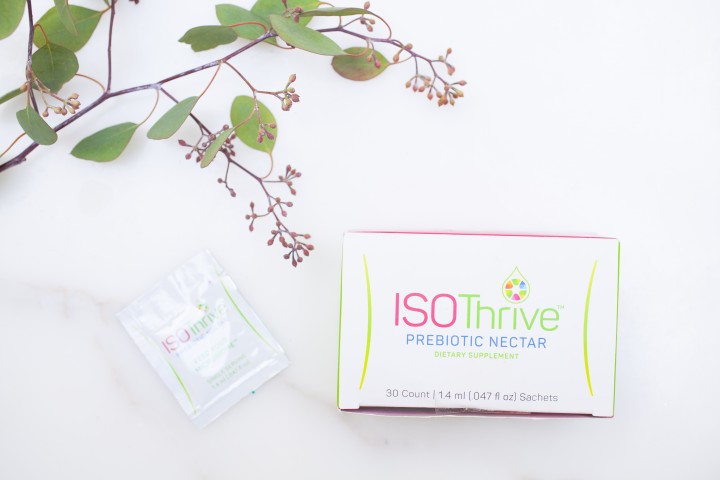
My younger daughter had a swollen belly for years. Even with all the healthy meals, probiotics, fermented foods, and cutting out gluten and sugar she still had quite a swollen tummy. After checking her for parasites and scar tissue (from a hernia surgery she had as a toddler) and finding out all was well, I was beginning to just lose hope and accept that she would always be extremely puffy around her belly button. Then at a beauty event I was speaking at, a man asked me if I knew about pre probiotics. I was literally walking by his stand when he stopped me (angel at work?), and asked me if I really knew about the subject. Here is the lesson I learned in that moment. We always have a choice. We can live with arrogance and decide we know it all, or we can keep our hearts and minds soft and open and allow for treasures to drift in. Part of me probably thought ‘oh I know all about this topic, after all mister this is what I do and what The Local Rose is about’. However the other part of me, the humble open part thought, ‘hey there is always something which I haven’t covered, and there is always new info out there.’ Thank the heavens I listened to the latter voice in my head. I ended up taking some samples of his products and trying them out on my daughter. Finally after years of inflammation in her gut and bloating in her belly, she is regaining her digestive health. It seems all these years I was giving her probiotics but not the pre-biotics. The digestive track needs to become a fertile place, to be able to absorb the probiotics. It sort of parallels our soil issues on the planet right now. We cannot grow healthy food unless the soil is healthy and thriving with micro-biomes.
You can now buy Iso Thrive on the Shop. Here is some more info ~
Industrialized food production has essentially removed the naturally occurring prebiotic soluble fiber from our diet. Without it your gut cannot function properly and is actually damaged with every meal. A compromised gut lining is the root cause of many illnesses.
ISOThrive gives you the prebiotic fiber you need to be healthy.
When you get the prebiotic soluble fiber that your body needs every day, your gut can deliver on all of these key functions to keep you healthy for life:
What are the ingredients in ISOThrive?
Each sachet of ISOThrive Prebiotic Nectar contains 1g of maltosyl-iso-malto-oligosaccharides (MIMO). These are just zero calorie complex carbohydrates. It’s like calling Vitamin C … Ascorbic Acid. The scientific name sounds weird and scary but it’s not actually weird and scary. ISOThrive is the same ingredient found in naturally fermented foods like kimchi and sauerkraut as well as traditionally fermented sourdough bread.
What is the difference between a prebiotic and a probiotic?
PRObiotics are the beneficial live bacteria that reside in your gut. They are a specialized, healthful subset of the overall bacteria co-habiting our bodies, often referred to as “the microbiome.”
PREbiotics are nondigestible soluble fibers that act as food for healthful bacteria (i.e. food for PRObiotics). We need to feed these beneficial bacteria to maximize health and wellness.
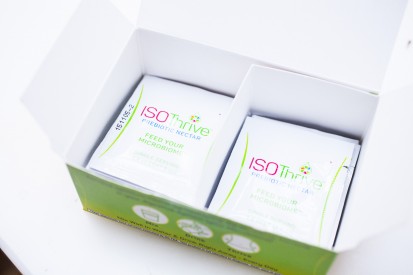


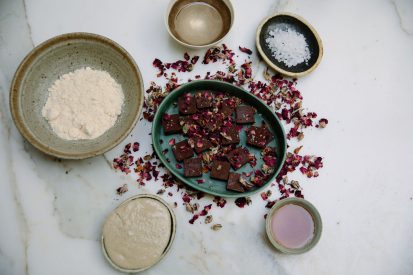

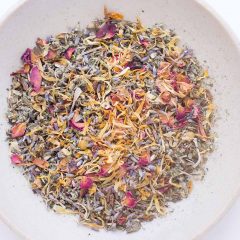







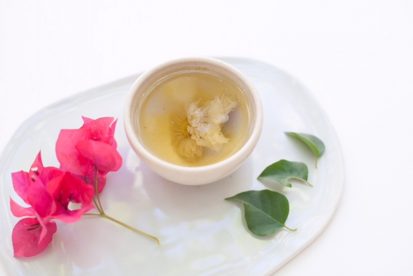
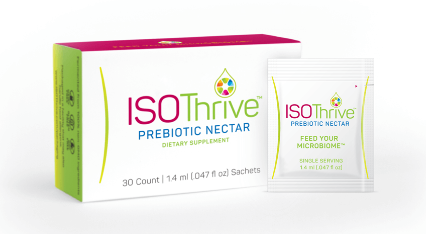



Hi Shiva,
I’d love to know a bit more about this – I assume your daughter wasn’t eating the industrialised, firbre-less food described but at least some fruit and veg, wholegrains and legumes and nuts, what is the advantage of taking prebiotics as opposed to getting insoluble fibre from non-indulstrialised whole foods? xx
Hi Hannah. I think its always best to get the probiotcs from whole foods, however my daughter had to take a specific medication one time and I think that compromised the fauna in her gut and it was a long struggle to get it healthy again just using foods.
Thank you for the question
Dr. Swann’s answer:
Great question. Since the dawn of agriculture we and our microbiome have evolved around two sources of prebiotic soluble fiber: that available in certain plants, with the highest amounts found in tubers, and that found in traditionally fermented vegetables and sourdough bread made using heirloom wheat. Once our ancestors settled around agriculture (i.e. no longer nomadic) the consumption of tubers declined and fermented foods became a much larger part of the diet. Fermentation was, at that time, one of the few ways to preserve food. Historically all successful cultures had one or more fermented foods as a foundation in the diet. That started changing when Louis Pasteur taught the world how to kill bacteria through pasteurization, and accelerated with the advent of refrigeration. Today few people eat more than a rare serving of fermented vegetables and today’s sourdough bread uses different wheat than in the past, and so has little prebiotic soluble fiber. In short, one of the staples our microbiome evolved to expect – fermented prebiotic soluble fiber – has gone missing from the diet. Thus returning it to the diet is of critical importance. There are two options for doing that: 1) eat several servings a day of traditionally fermented vegetables or 2) take a prebiotic supplement like ISOThrive made through natural fermentation. Both are potentially doable but obviously the latter is easier (especially for the significant segment of the population that doesn’t like the sour taste of fermented foods.)
Let me know. Thanks!
Hannah,
Great question. Since the dawn of agriculture, we and our microbiome have evolved around two sources of prebiotic soluble fiber: that available in certain plants, with the highest amounts found in tubers, and that found in traditionally fermented vegetables and sourdough bread made using heirloom wheat. Once our ancestors settled around agriculture (i.e. no longer nomadic) the consumption of tubers declined and fermented foods became a much larger part of the diet. Fermentation was, at that time, one of the few ways to preserve food. Historically all successful cultures had one or more fermented foods as a foundation in the diet. That started changing when Louis Pasteur taught the world how to kill bacteria through pasteurization, and accelerated with the advent of refrigeration. Today few people eat more than a rare serving of fermented vegetables and today’s sourdough bread uses different wheat than in the past, and so has little prebiotic soluble fiber. In short, one of the staples our microbiome evolved to expect – fermented prebiotic soluble fiber – has gone missing from the diet. Thus returning it to the diet is of critical importance. There are two options for doing that: 1) eat several servings a day of traditionally fermented vegetables or 2) take a prebiotic supplement like ISOThrive made through natural fermentation. Both are potentially doable but obviously the latter is easier (especially for the significant segment of the population that doesn’t like the sour taste of fermented foods.)
Sincerely,
Peter Swann, M.D., FACOEM, FAAFP
Chief Medical Officer
ISOThrive
Would you take the probiotics before or together with probiotics ? Can I ask you what probiotics you give your daughter?
Thanks!
Oops meant to say *PREbiotics before or together with probiotics
Dr. Swann says: You can…and you should. Here’s why:
Probiotics are healthful bacteria that consume prebiotic soluble fiber for energy. They prefer dietary soluble fiber from certain plants or from fermented vegetables. However, if your diet doesn’t have adequate prebiotic soluble fiber (and most of ours don’t) they then use the mucous lining of the gut as food for survival. Over time the mucous lining degrades, the gut becomes “leaky”, leading to an assortment of health issues. So if you’re taking probiotics, it’s imperative to also take in adequate prebiotic soluble fiber to keep the probiotic bacteria from dining on you. And if you take both probiotics and prebiotics, it’s best to separate them by at least 6 hours so the prebiotics help the bacteria grow in the colon, where they belong.